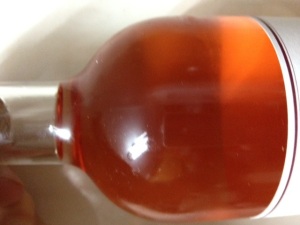This is what I invented and have been using, but for a number of reasons, I have found some difficulty applying it. So the time has come to modify it. Call this the PinchasL modification as I am incorporating the approach of this member of the Israeli & Kosher Wine Forum of the WineLovers Discussion Group. This gentleman writes frequently on the forum and he usually has some good things to say. He uses the following system which looks separately at Quality and Value, giving a score for each:
Grading for quality: A – marvellous, B – good/intriguing, C – mediocre/uninspiring, D – subjectively flawed, F – objectively flawed
Grading for value: *** – it’s a steal, ** – it’s a reasonable deal, * – you’ve been robbed
I have some reservations about his system and won’t jump ship and dump my old system. I don’t understand how he could say that a wine is D/*** because if it is flawed, why would I want to “steal” it. If it’s an F, I wouldn’t even take it if you paid me! At the other end of the spectrum, if it is of so marvelous, you haven’t really been robbed. So let’s change the * to mean that it is overpriced. Something could be marvelous but cost too too much. I am not into thievery, so let’s change the *** to mean that it is a bargain at the price.
I will change my A to mean that it is absolutely fantastic, or marvelous, as Pinchas designates this grade. My B will heretofore mean, good, intriguing, and I am very happy that I am drinking it. My C will still mean that it is O.K., implying uninspiring and hinting at mediocrity. Can a mediocre wine be at a bargain price? I think that the answer is yes. Many of the Israeli table wines might receive this grade. So we’ll have to change the descriptor for D to mean that it is not so good, or better, poor. I agree with Pinchas that flawed is a reasonable term, however, I disagree about the subjective/objective terminology because basically all wine tasting is subjective.
So here we have it:
A – Absolutely fantastic/marvelous B – Good/intriguing/happy I’m drinking it C – O.K. but uninspiring/mediocre D – Poor/use for cooking F – wretched/dump it
I really like the ability to separately rank a wine for its Quality/Price ratio so will use Pinchas’ of using stars;
*** A bargain price ** reasonable price for what you’re getting * overpriced
Now we’ll put it to the test and see what happens over the next few months. I think that it is a good system and has significant improvements over the original pictured above.




